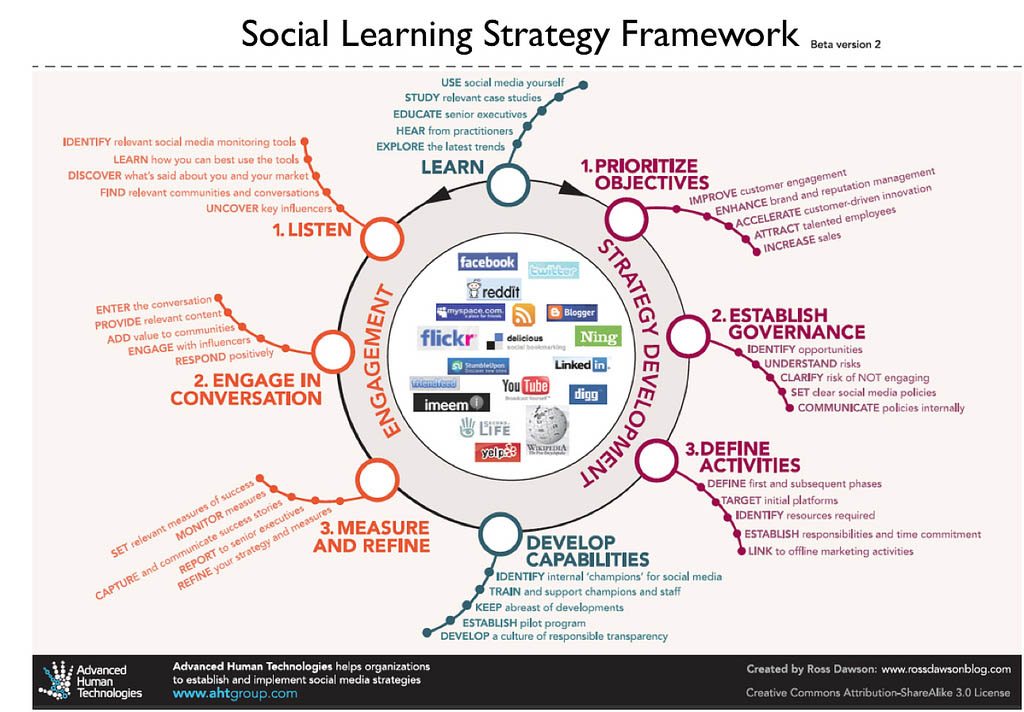
How To Adapt A Social Learning Strategy Framework For Education
Social learning strategies are, generally speaking, the stuff of businesses and brands.
The word “learning” in the above phrasing is misleading, usually referring to how a business can “learn” what does and doesn’t work in regards to their social media and community strategies. It was in this light that the following graphic from rossdawsonblog was created, with its language of “sales,” “employees,” and “influencers,” none of which sound much like anything a teacher would need.
So in that way, the following graphic isn’t immediately useful for 21st century educators, but the cycle shown below had some striking similarities as I looked a bit closer. Business and education have more overlap than they’d seem to.
Both can be reduced to the process of aligning an audience (students or customers) with a purpose (learning or purchasing).
Both can benefit from marketing and “spin.”
And both depend on data, interaction, clear objectives, and conversation.
Turning it over to you, does a social learning strategy framework like the one below make sense for education? If so, with what revisions?
Is selling widgets like selling content?
Should teachers “sell” content? Does it hurt to see the learning process in that light?
The framework below is broken down into two categories–Strategy Development & Engagement. What if, instead of considering teacher strategies, we focused on learning strategies, and began each unit or lesson by clarifying learning strategies, learning actions, and learner engagement, including:
1. WHAT the student engages with–from peers to teachers to content and technology
2. WHO the student engages with
3. WHEN the student engages
4. WHY the student makes those engagements
Maybe it’d make sense to break off the left side and create a new “Engagement Framework for Learning” that uses technology, apps, and the like?
Thoughts?
Adapting A Social Learning Strategy Framework For Education; image attribution rossdawsonblog

